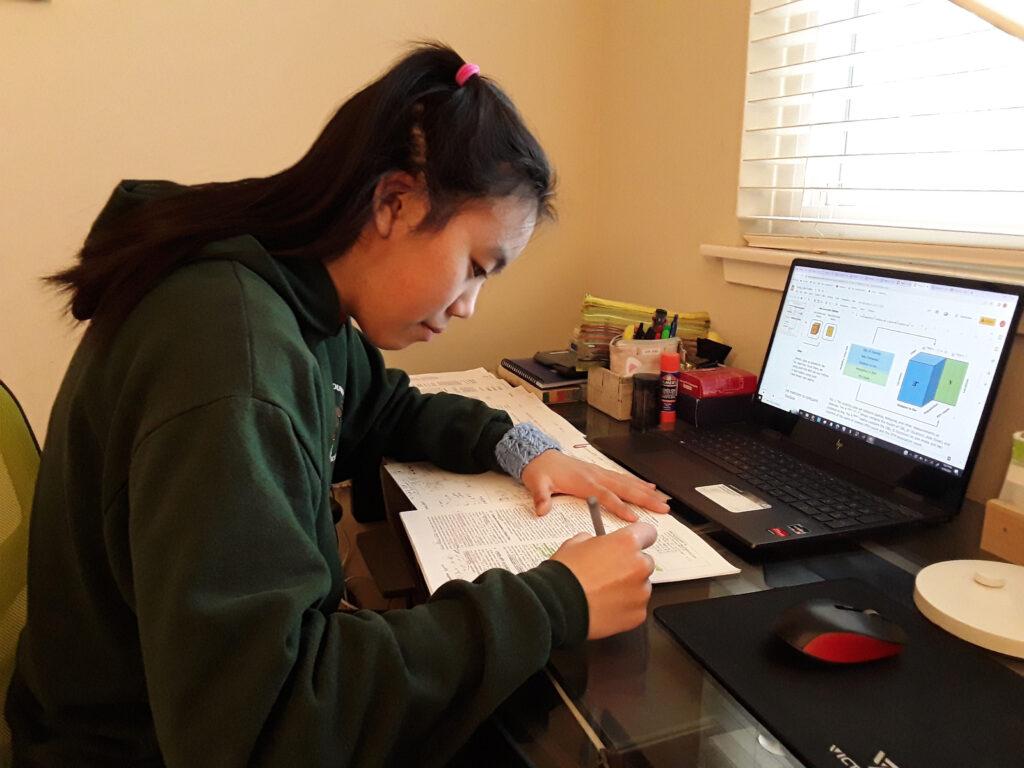Over the summer, senior Lisa Fung attended UC Santa Barbara’s Research Mentorship Program (RMP). After spending 6 weeks immersed in research in mathematical optimization — with breaks for activities such as playing basketball, snorkeling and surfing — she discovered a new method for using data to model human movement during natural disaster evacuation.
Her project, “Data Fusion for Movements Analytics: Evaluating Mobility Patterns During Wildfire Season Using Coupled Matrix-Tensor Factorization,” has earned her recognition as one of the top 300 applicants in the 2023 Regeneron Science Talent Search, announced Jan. 10.
Using SafeGraph’s geographic data of the greater Los Angeles area, Fung singled out variables such as the number of points of interest and distances to wildfires. She then used a coupled matrix-tensor factorization (CMTF) algorithm to find the hidden factors that influence human movement. Her research would aid in simulating human movement for natural disaster evacuation, depending on factors such as time of day and weather. Greater understanding of human movement could potentially lead to better evacuation routes and reduced traffic, she said.
Fung was initially inspired to research applications of CMTF after meeting with her mentor Evgeny Noi, a Ph.D. student at UC Santa Barbara, to discuss the different possibilities of using algorithms to study mobility data. Fung was also motivated to try the algorithm on wildfires because of their prevalence in California in recent years.
Due to the complexity of her research, Fung first spent a few weeks annotating papers and teaching herself the mathematical theory behind her project. While she studied data fusion and tensor decomposition, her mentor helped her with his background knowledge about the field, and she met with him several times a week at UCSB to learn how to apply geographic visualization to mobility data.
Afterward, she shifted to application, employing her knowledge of programming languages like Python to tweak various open-source algorithms to mathematically develop CMTF to work on her data. By this time, she met with her mentor once a week via Zoom as the program at UC Santa Barbara had ended.
The time she spent working on her project totaled up to 50 to 60 hours per week when she was in the program. In the fall, she continued working on it for around 5 hours per week.
For Fung, one of the most difficult aspects of her research was overcoming errors or restrictions in other people’s open-source algorithms to adapt them to her specific application.
“I remember working for four hours straight once because I was completely focused on my research then,” she said. “I think you just have to be willing to keep going because it’s a long process and there are so many errors, so many bugs that you have to fix.”
Fung described the program as “a huge time crunch,” which was especially challenging as it was her first time doing research.
“I was really trying to make sure my algorithm works correctly,” she said. “I was scared of getting results because it seems so final. You’re like ‘oh my gosh, I have to make sure I do everything right.’ So I had to overcome that fear, and just go for it.”
In November, she submitted her results to the 2023 Regeneron Science Talent Search. To her surprise, she placed among the top 300 semifinalists of nearly 2,000 applicants across the U.S. and other countries, earning $2,000 in prize money for herself and another $2,000 for SHS.
Having completed the application portion of her research over the summer, Fung also continued working on her CMTF algorithm throughout the school year.
In the fall, while juggling college applications, classes and extracurriculars in addition to her research, Fung felt that she made “less progress than she wanted to.”
However, going forward, she hopes to continue developing the algorithm to be more optimized and accurate, now that she has more free time as a second-semester senior. She also plans to look into other applications for the CMTF algorithm beyond mobility data.
“There are definitely some tough spots [in research], but once you get over them, they are the most enjoyable moments,” Fung said. “It’s the feeling of ‘I solved it.’”
























